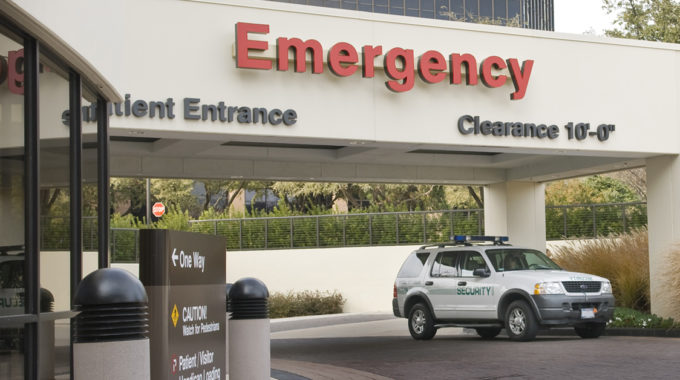
Is It Appropriate for Doctors to Use the Surprise Question on Terminally Ill Patients?
The “surprise question” is a technique doctors sometimes use to help with care planning for terminally ill patients. Its appropriateness has been called into question recently.1,2 Some say that routinely asking the surprise question improves care planning, while others contend that it’s not accurate enough or that it feels inappropriate. Do you want the surprise question used in care planning for you or a loved one?
What is the Surprise Question?
The surprise question is a technique designed to help doctors decide if it’s time to take a closer look at prognosis, discuss hospice, or evaluate for palliative care.3 It’s very simple. When treating terminal illness, clinicians ask themselves, “Would I be surprised if this patient died in the next twelve months?” A “yes” answer triggers more attention to developing a formal prognosis, evaluating for palliative care needs, and having a discussion about hospice.
Why Ask the Surprise Question?
The surprise question is designed to prevent unproductive delays in end-of-life care planning. While doctors are capable of estimating life expectancy, they tend to be overly optimistic. In fact, in very general terms, doctors tend to overestimate life expectancy by a factor of two.
Some Clinicians are Uncomfortable with the Surprise Question
In many ways, the surprise question has received widespread acceptance since it was first introduced in 2008.4 It has been incorporated into important clinical guidelines such as the Gold Standards Framework and the Supportive and Palliative Care Indicators Tool. On the other hand, some offices that have tried to implement it have subsequently abandoned routine use of the question.1 Clinicians complained about the way the question makes them feel.
Some Authorities Say the Surprise Question is Inaccurate
James Downar, MDCM and colleagues gathered all the studies on the surprise question. They combined and systematically analyzed the results.2 The complaint from Downar and others is that the question is not accurate enough to be a screening tool in healthcare.1 With a sensitivity of 67%, the surprise question alone would not help 33% of people who need more attention. In commentary published by the Journal of the American Medical Association earlier this year, Downar advocates for “big data” as the alternative screening tool. By inputting the answers to many questions and constantly calculating how that data relates to prognosis, computer programs such as mHOMR and RESPECT can issue prognoses for specific situations.4,5
Other Authorities Say the Surprise Question Improves Care
Writing in defense of the surprise question are Rafael Romo PhD PHN and Joanne Lynne MD.7 They point out that, in general practice and compared to the alternatives, the surprise question helps identify patients who need more attention. To be practical, screening tools need to be broadly applicable, lower cost, and more accurate than the alternatives. Perhaps most importantly, screening tools should integrate seamlessly into the existing workflow. Anything less won’t be used in real life.
An earlier meta-analysis deemed the surprise question to have a sensitivity lower than but similar to Downar et al.’s conclusion. However, the surprise question still demonstrated superior predictive value than type of cancer, age, cancer stage, or time since diagnosis.8
Timing is Very Important in End-of-Life Care
There are multiple negative outcomes from doctors waiting too late to bring up end-of-life planning and from families waiting until later to enroll in hospice. Earlier hospice conversations result in higher quality of life for patients, improved bereavement status for family, and cost savings for patients and Medicare. Similarly, more timely enrollment in hospice is connected with greater patient comfort, better mental health for family, survival extended by days to months, improved satisfaction, and costs lowered for patients and family.
References:
- Downar J, Wegier P, Tanuseputro P. Early Identification of People Who Would Benefit From a Palliative Approach—Moving From Surprise to Routine. JAMA Network Open. 2019 Sep 4; 2 (9): e1911146.
- Downar J, Goldman R, Pinto R, Englesakis M, Adhikari NK. The “surprise question” for predicting death in seriously ill patients: a systematic review and meta-analysis. CMAJ. 2017 Apr 3;189 (13): E484-93.
- Romo RD, Lynn J. The utility and value of the “surprise question” for patients with serious illness. CMAJ: Canadian Medical Association Journal. 2017 Aug 21;189(33):E1072.
- Moss AH, Ganjoo J, Sharma S, et al. Utility of the “surprise” question to identify dialysis patients with high mortality. Clin J Am Soc Nephrol. 2008; 3: 1379-84.
- Wegier P, Koo E, Ansari S, et al. mHOMR: a feasibility study of an automated system for identifying inpatients having an elevated risk of 1-year mortality. BMJ Qual Saf. 2019; bmjqs-2018-009285.
- Hsu AT, Manuel DG, Taljaard M, et al. Algorithm for predicting death among older adults in the home care setting: study protocol for the Risk Evaluation for Support: Predictions for Elder-life in the Community Tool (RESPECT). BMJ Open. 2016;6(12): e013666.
- Romo RD, Lynn J. The utility and value of the “surprise question” for patients with serious illness. CMAJ: Canadian Medical Association Journal. 2017 Aug 21; 189 (33): E1072.
- Hui D. Prognostication of survival in patients with advanced cancer: predicting the unpredictable?. Cancer Control. 2015 Oct;22(4):489-97.





